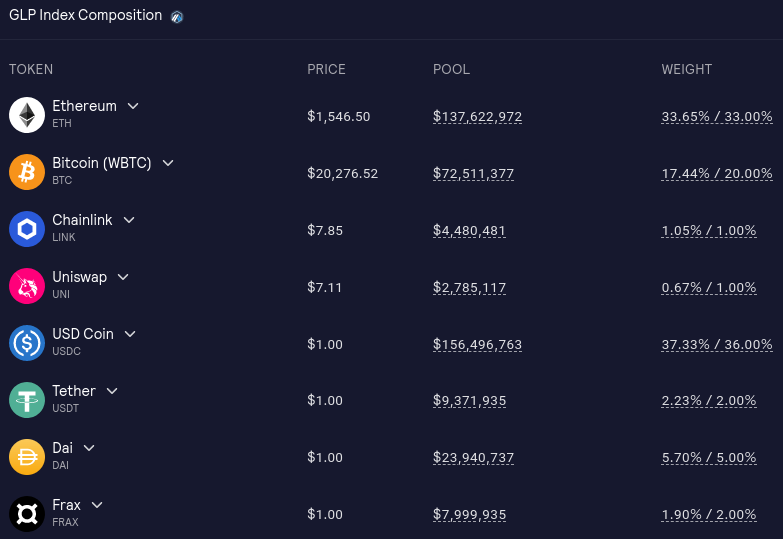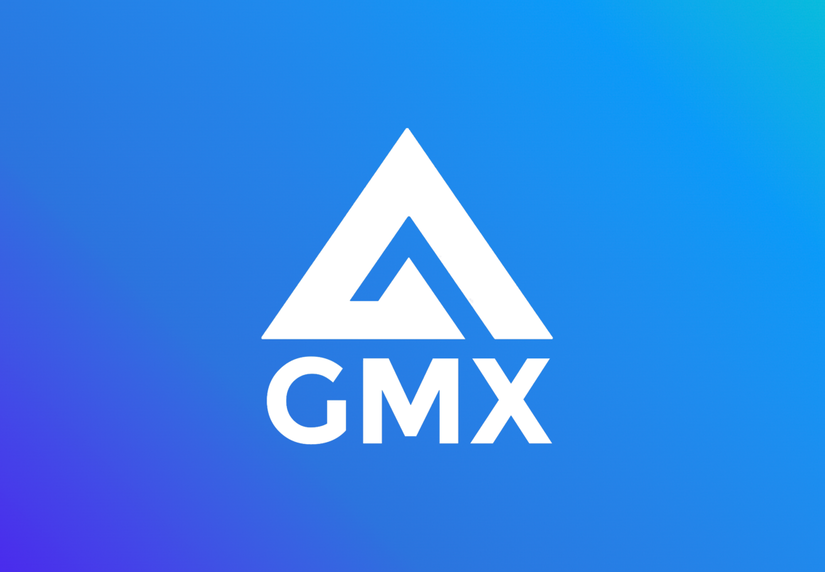GMX the decentralized finance (DeFi) ecosystem has seen significant growth. Indeed, this one has seen the birth of a multitude of protocols across various application areas. Originally, this craze was initiated by the creation of decentralized exchange platforms. Today, we’ll explore GMX, one of the fastest growing decentralized exchanges since the beginning of 2022.
GMX: The decentralized (dex) derivatives exchange
GMX is a decentralized finance project, belonging to the category of decentralized exchange platforms.
First introduced around August 2021, the project was deployed on the Arbitrum mainnet in September 2021. GMX will subsequently also be deployed on the Avalanche blockchain.
Until now, the platform is being developed by an anonymous team. Something relatively common in the DeFi ecosystem, but not to be underestimated in terms of the risks it can create.

On its website, the protocol is presented as follows:
“GMX is a decentralized spot and perpetual exchange platform that supports low swap fees and price-neutral transactions.”
This clear and concise description outlines all of the main features offered by GMX. However, when you look in detail, the platform offers a multitude of services, which are known to be highly valued by traders.
Swaps, perpetual contracts and leverage trading
In its simplest guise, GMX is an exchange platform for swapping cryptocurrencies with each other. The platform supports 8 crypto-currencies, namely ETH, WBTC, LINK, UNI, USDC, USDT, DAI and FRAX.
The exchanges offered by GMX are low-cost and have no impact on the price of the underlying assets. In other words, no reason to worry about slippage.
On top of that, GMX offers a derivatives exchange service. In other words, it is possible to go long or short the set of assets supported by the protocol.
Finally, the platform allows its traders to perform leveraged trading. Thus, it is possible to make trades with a leverage of up to x30.5.
Dex GMX a protocol that wants to be “Real Yield”
In just a few months, GMX has managed to become the most widely used protocol in the second Arbitrum layer. As a result, GMX is gathering a TVL of $422 million on Arbitrum and $67 million on Avalanche.

Behind the success of this DEX, we find the phenomenon of Real Yield. In a nutshell, many protocols have started calling themselves “Real Yield” protocols, because the returns generated by stakers and liquidity providers come from the very activity of the protocol.
Thus, Real Yield stands in contrast to the more common model, where returns are primarily generated by the issuance of new tokens. Unfortunately, this money-issuance based return mechanism has proven time and again to be inefficient over the long term.
Inversely, the return proposed by GMX, on the other hand, is based on protocol activity. In fact, all fees collected by the protocol are returned to the stakers and liquidity providers on GMX.
And fees, on the other hand, are based on the activity of the protocol
Since its launch, the platform has recorded a total of $73 billion in volume.

Of that volume, $124 million in fees were reaped and redistributed to stakers and liquidity providers. Of those rewards, $113 million went to GMX users on Arbitrum and $11 million to users on Avalanche.
DEX GMX: the governance token
Like most DeFi protocols, the protocol has its governance token entitled GMX. Launched alongside the platform, the GMX token allows its holders to take part in decisions about protocol developments.
Tokenomics
The protocol currently has 8.1 million GMX tokens in circulation. Eventually, it is expected that there will be a total of 13.25 million GMX tokens. These will be distributed in the following manner:
- 6 million GMX from the migration of XVIX and Gambit.
- 2 million GMX paired with ETH to add liquidity on Uniswap.
- 2 million GMX reserved for the acquisition of locked-in GMX rewards (the vesting of esGMX).
- 1 million GMX tokens reserved for marketing, partnerships and community developers.
- 2 million GMX tokens to be managed by the “floor price fund”.
- 250,000 GMX tokens distributed to contributors in a linear fashion over 2 years.
Meanwhile, the issuance of new GMX tokens depends on the number of tokens deposited in vesting.
Staking GMX
However, its usefulness does not end there. Indeed, GMX holders also have the option of staking their tokens to get a return on them.
Thus,30% of the fees generated by swaps and margin trading are distributed to GMX stakers.
In practice, stakers receive three types of rewards, namely:
- “escrowed GMX” esGMX;
- Multiplier points, which apply a multiplier to the user’s return;
- ETH or AVAX, depending on the blockchain.
Thus, the more a user stays loyal to the protocol and keeps their GMX in stake, the larger their multiplier will be and their returns as well.
“Multiplier points can be staked for fee rewards by pressing the “Compound” button on the Earn page, each multiplier point will increase the ETH / AVAX RPA at the same rate as a regular GMX token.”
esGMX: what is it?
As we have just seen, GMX staking results in the generation of rewards in the form of esGMX or Escrowed GMX.
In practice, each esGMX represents a GMX token that is subject to a vesting period, also known as a lock-in period. It is possible to unlock GMX tokens by converting its esGMX.
To do this, the user will have to block their esGMX tokens for a period of one year. During this period, every second, a portion of the esGMX will be converted to GMX. As explained in the GMX documentation:
“After the vesting launch, esGMX tokens will be converted into GMX every second and will be fully vested in 365 days. EsGMX tokens that have been converted to GMX can be claimed at any time.”
This method allows for control of monetary issuance and favors users with a long-term vision for the project.
GLP: the cash-provider-token
In addition to GMX, the protocol has a second token: the GLP. However, before we discuss the GLP token, we should review how GMX works.
A single multi-asset pool
GMX differs from most decentralized exchange platforms in its architecture.
In fact, most DEXs are based on the concept of MAs. Without going into detail, the Automated Market Maker (AMM)provide a multitude of pools, each with at least 2 tokens. Each pool will then represent a trading pair. This is notably how Uniswap works.
For its part, GMX on the other hand is based on a single multi-asset pool. This pool is composed of all the cryptocurrencies supported by the protocol.
GLP: the heart of GMX dex
For its part, GLP represents an index of cryptocurrencies that can be traded on GMX.
In practice, the GLP is the token that represents the liquidity deposited by liquidity providers on the protocol.
“The GLP is a basket of assets used for swaps and leveraged transactions. It can be issued using any asset in the index and burned to buy back any asset in the index.”
The asset creation price is based on the following calculation:
(the total value of the index assets, including profits and losses from open positions)/(the supply of GLP outstanding)Staking of GLP
Like its cousin the GMX, the GLP TOKEN can also be staked on the appropriate GMX module. The staking rewards of GLP tokens, too, are derived from the use of the protocol. Indeed, 70% of the fees collected by the protocol are distributed to GLP holders.
Staking one’s GLP tokens generates two types of token rewards :
- esGMX;
- ETH or AVAX, depending on the blockchain.
Rebalancing and liquidity management
To ensure healthy operation, the GMX protocol must continuously ensure that the liquidity in the asset basket is in the right proportions.
To do this, the protocol has implemented a rebalancing mechanism or rebalancing.
First, the protocol will adjust fees based on the needs of the pool. For example, if the GLP index has a lot of ETH but little USDC, actions on the protocol involving ETH will have a higher fee than actions on USDC.
First, the protocol will adjust the fee based on the needs of the pool
Second, the exposure to each token is adjusted to allow GLP holders to hedge against open positions in the futures market.
“For example, if a lot of traders are long ETH, then ETH will have a higher token weight, if a lot of traders are short, then a higher token weight will be given to stablecoins.”
However, these mechanics create some delays as to rebalancing. Indeed, on the GMX dashboard, we can see that each asset has a weight in the pool as well as a target weight towards which the pool tries to move.

For example, at the time of writing, ETH represents 33.65% of the pool, with a target weight of 33%. Therefore, ETH is above the target weight, which implies that swaps from ETH to other crypto have minimum fees.
Risks and audits of dex GMX
Of course, like any decentralized finance protocol, GMX is not without risk. Indeed, the protocol is based on a series of smart contracts, which does not exclude the potential presence of flaws in the code. Nevertheless, the protocol was subject to a first in-depth audit of the code at the time of its launch. This audit had been conducted by ABDK Consulting and its result is available on GMX’s GitHub.
More recently, on October 17, GMX teams published the result of a new audit, conducted in September 2022 by the company Quantstamp. This audit shed light on 23 issues with a low degree of risk and 1 issue with a medium degree. Some could be resolved following the audit, while others require more time. The approach of the GMX teams is commendable, but it should be kept in mind that going through an audit does not totally exclude the presence of risks when using the protocol.
Conclusion
GMX is a decentralized exchange platform that could stand up to the biggest giants in the ecosystem. Deployed on Arbitrum and Avalanche, this one is meant to be accessible by focusing on ecosystems with low transaction costs. Via the various services offered, GMX could become the preferred DEX for traders, especially those accustomed to margin trading. Nevertheless, the anonymity of the team behind the project as well as the few problems found during audits cannot be ignored.


